Discover how a bimodal integration strategy can address the major data management challenges facing your organization today.
Get the Report →Create SAS Data Sets Dashboards in Bold BI
Use CData Connect Server to create a virtual SQL Server Database for SAS Data Sets data to build custom dashboards in Bold BI.
Bold BI allows you to create, share, and collaborate on interactive BI dashboards. When paired with CData Connect Server, you get instant access to SAS Data Sets data for visualizations, dashboards, and more. This article shows how to create a virtual database for SAS Data Sets and build reports from SAS Data Sets data in Bold BI.
CData Connect Server provides a pure SQL Server interface for SAS Data Sets, allowing you to easily build reports from live SAS Data Sets data in Bold BI — without replicating the data to a natively supported database. As you build visualizations, Bold BI generates SQL queries to gather data. Using optimized data processing out of the box, CData Connect Server pushes all supported SQL operations (filters, JOINs, etc) directly to SAS Data Sets, leveraging server-side processing to quickly return the requested SAS Data Sets data.
Create a Virtual SQL Server Database for SAS Data Sets Data
CData Connect Server uses a straightforward, point-and-click interface to connect to data sources and generate APIs.
- Login to Connect Server and click Connections.
![Adding a connection]()
- Select "SAS Data Sets" from Available Data Sources.
-
Enter the necessary authentication properties to connect to SAS Data Sets.
Set the following connection properties to connect to your SAS DataSet files:
Connecting to Local Files
- Set the Connection Type to "Local." Local files support SELECT, INSERT, and DELETE commands.
- Set the URI to a folder containing SAS files, e.g. C:\PATH\TO\FOLDER\.
Connecting to Cloud-Hosted SAS DataSet Files
While the driver is capable of pulling data from SAS DataSet files hosted on a variety of cloud data stores, INSERT, UPDATE, and DELETE are not supported outside of local files in this driver.
Set the Connection Type to the service hosting your SAS DataSet files. A unique prefix at the beginning of the URI connection property is used to identify the cloud data store and the remainder of the path is a relative path to the desired folder (one table per file) or single file (a single table). For more information, refer to the Getting Started section of the Help documentation.
![Configuring a connection (SQL Server is shown).]()
- Click Save Changes
- Click Privileges -> Add and add the new user (or an existing user) with the appropriate permissions.
With the virtual database created, you are ready to connect to SAS Data Sets data from Bold BI.
Visualize Live SAS Data Sets Data in Bold BI
The steps below outline connecting to CData Connect Server from Bold BI to create a new SAS Data Sets data source and build a simple visualization from the data.
- Log into your Bold BI instance, click the data sources tab, create a new data source, and choose the SQL Server connector.
- Choose the basic configuration and set the connection properties:
- Name: Name your connection
- Server name: Your Connect Server instance (CONNECT_SERVER_URL)
- Port: 1433
- Username: Your Connect Server username
- Password: Your Connect Server password
- Mode: Choose Live to query SAS Data Sets on-demand or choose Extract to load the data into Bold BI
- Database: Choose the database you created from the drop-down menu (sasdatasetsdb)
- Click Connect
- Select the table to visualize and drag it onto the workspace.
- Select a visualization style and add it to the report.
- Click the gear icon for the visualization to configure the visualization properties and assign columns to the visualization.
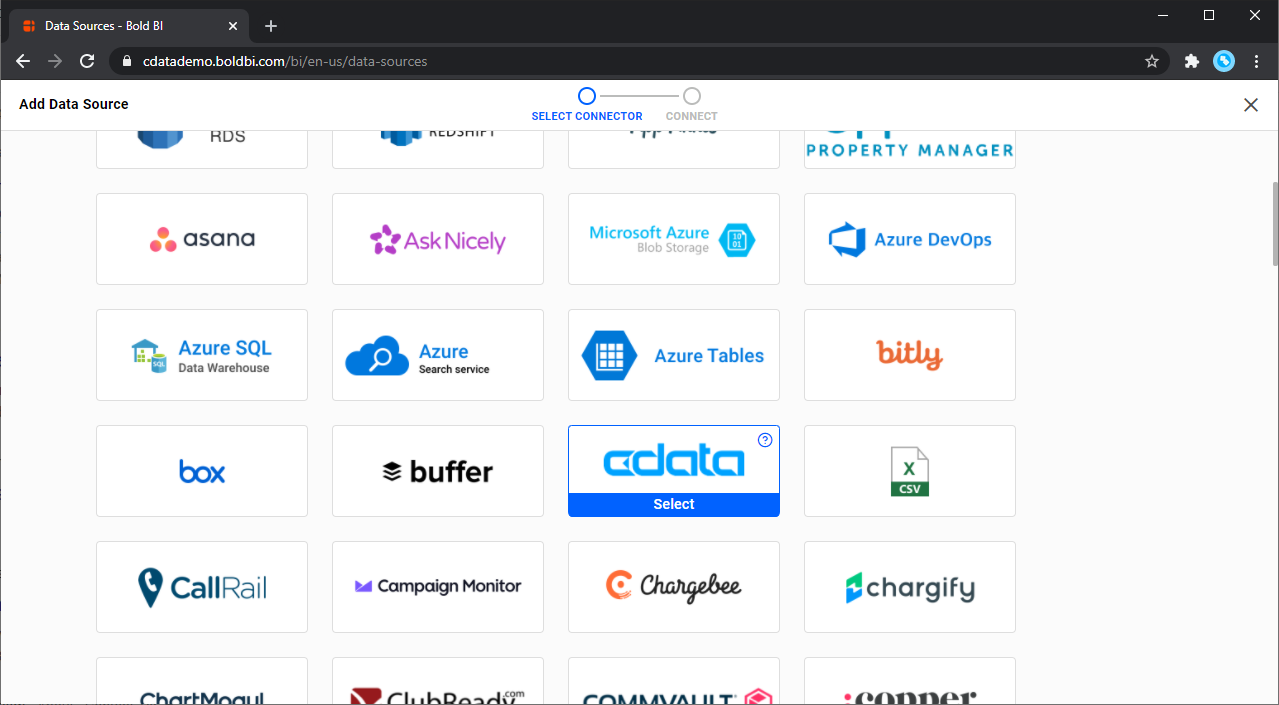
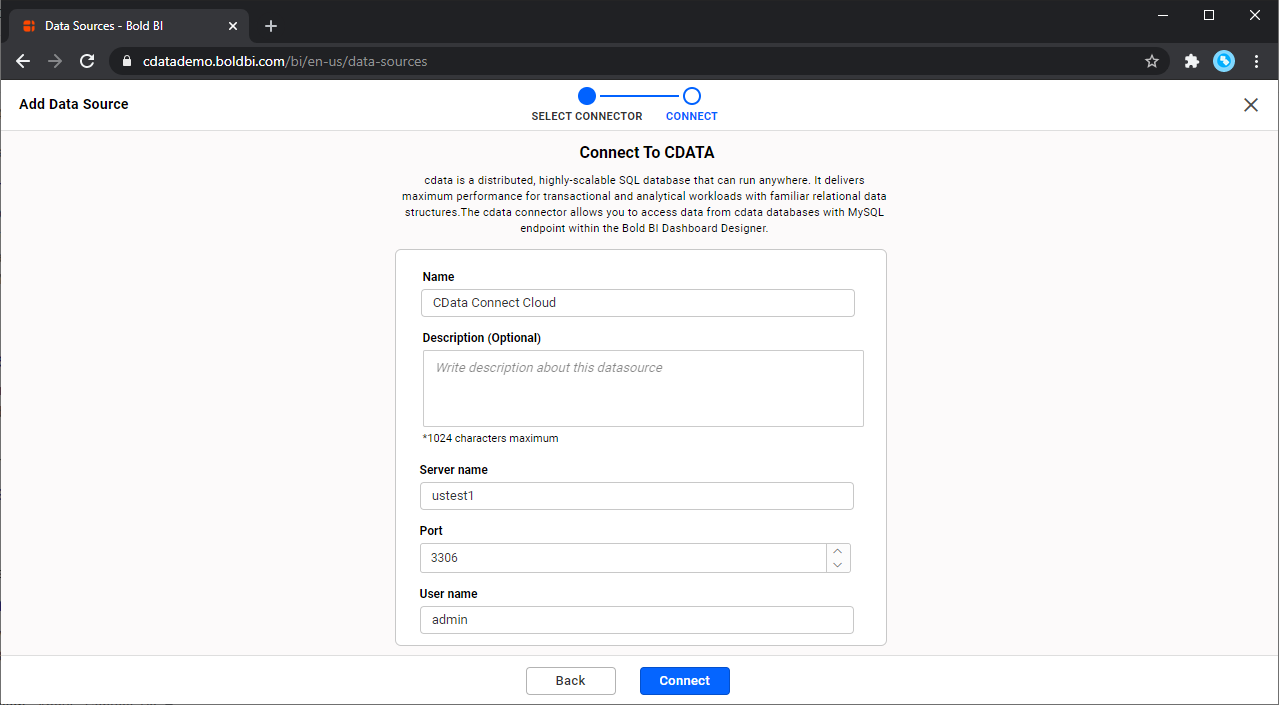
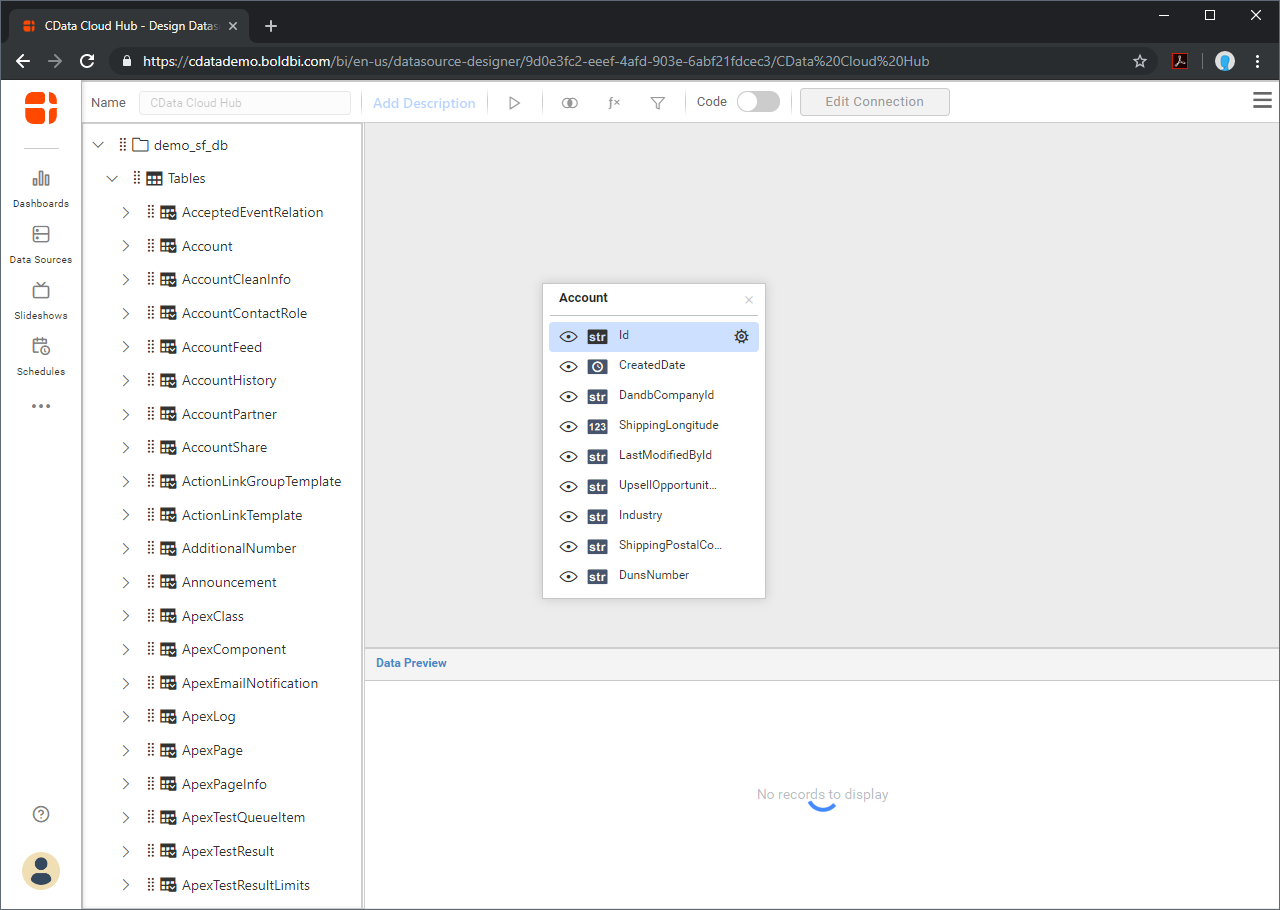
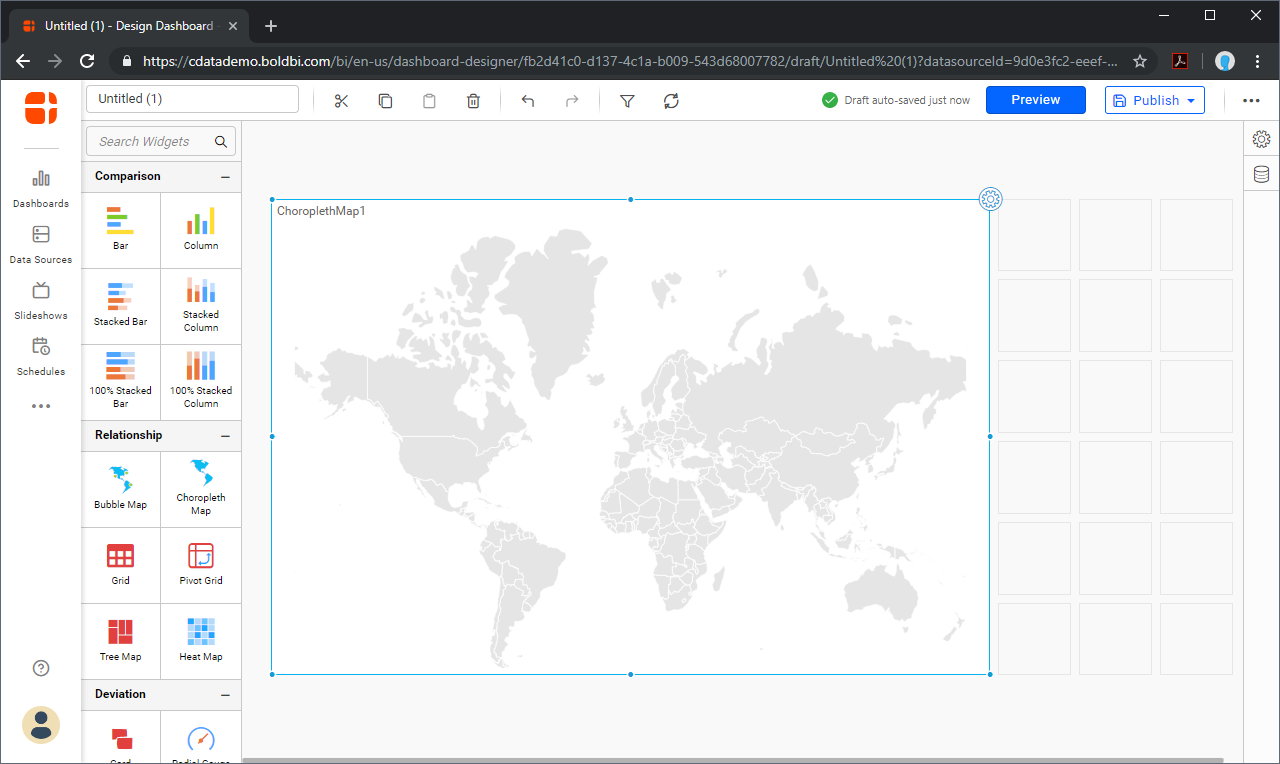
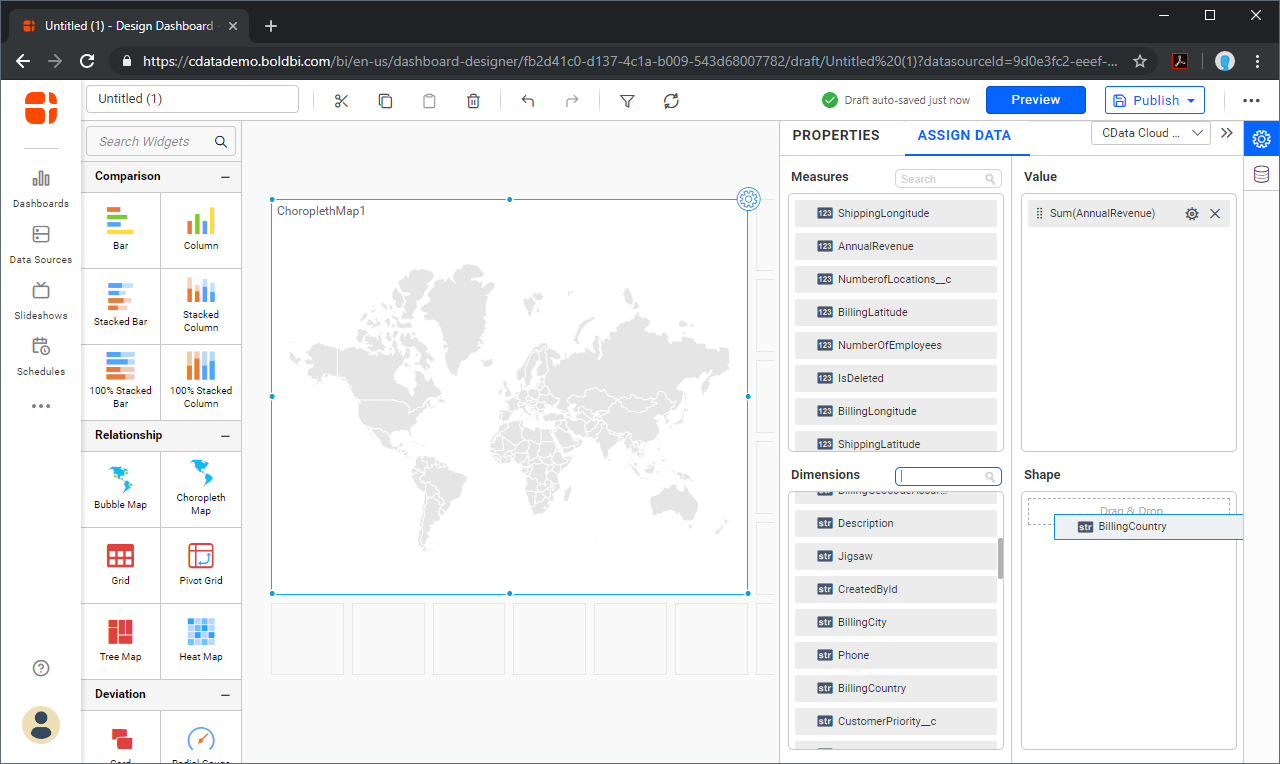
SQL Access to SAS Data Sets Data from Applications
Now you have a direct connection to live SAS Data Sets data from your Bold BI workbook. You can create more data sources and new visualizations, build reports, and more — all without replicating SAS Data Sets data.
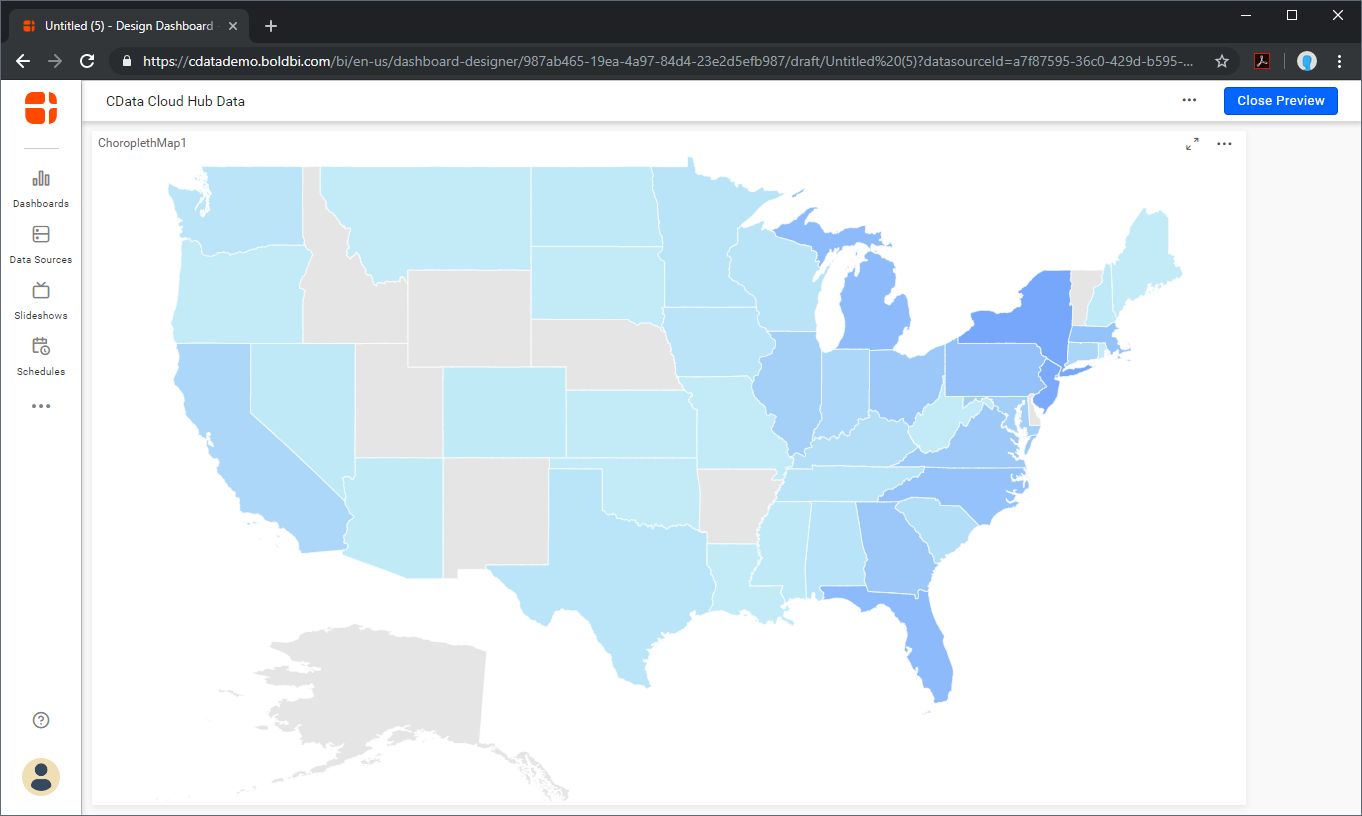
To get SQL data access to 200+ SaaS, Big Data, and NoSQL sources directly from your applications, see the CData Connect page.








